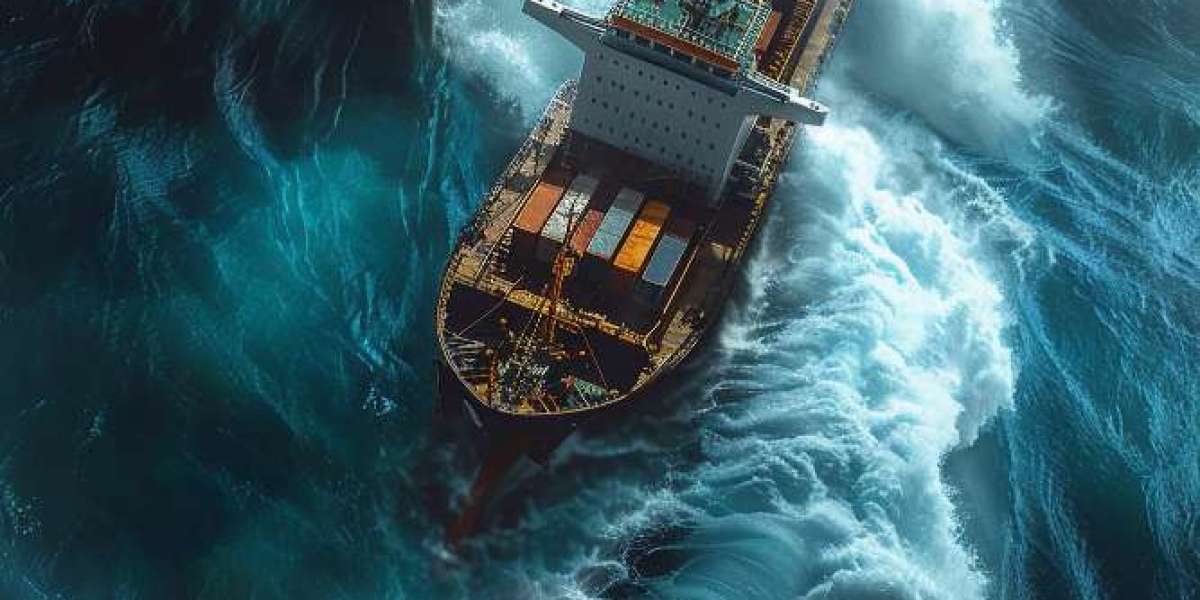In today’s interconnected world, the transportation of goods across international borders is essential to global commerce. Among the various modes of transportation, sea freight stands as the backbone of international trade, accounting for a significant portion of the goods transported worldwide. Whether it's raw materials, finished products, or consumer goods, sea freight is responsible for moving the bulk of goods across oceans and seas, connecting markets and economies globally.
In this blog, we will explore what sea freight is, how it works, and why it’s so important for businesses and industries around the world.
What is Sea Freight?
Sea freight refers to the process of shipping goods via ocean vessels, typically using large container ships, bulk carriers, or tankers. This form of transportation is used to move large quantities of goods, both domestically and internationally, across oceans, seas, and major waterways. Sea freight is widely recognized for being one of the most cost-effective methods for transporting large volumes of goods over long distances.
Why Choose Sea Freight?
There are several reasons why sea freight remains a preferred choice for transporting goods worldwide. Here are some of the key benefits:
Cost-Effectiveness: Sea freight is generally more affordable than other modes of transportation, such as air freight or road transport. The ability to move large volumes of goods at once makes it a cost-efficient option, especially for businesses dealing in bulk goods.
Capacity: Ships can carry a massive amount of cargo—far more than trucks or airplanes. Large container ships can carry tens of thousands of containers, and bulk carriers can transport huge quantities of raw materials like coal, grain, or oil.
Global Reach: Sea freight provides access to international markets and is a crucial part of the global supply chain. Major ports around the world are interconnected, enabling seamless movement of goods between continents.
Safety: The sea freight industry is highly regulated, ensuring that cargo is transported safely. Moreover, ships are designed to handle challenging weather conditions, providing added security for goods in transit.
Environmental Benefits: Shipping by sea generally produces fewer carbon emissions compared to air freight, making it a more sustainable option for long-distance transportation.
How Does Sea Freight Work?
The process of sea freight involves several key stages, from the initial shipment booking to the final delivery of goods at their destination. Let’s break it down:
Booking the Shipment: The first step in the sea freight process is booking space on a ship. Businesses or freight forwarders will arrange for space on a container ship that is traveling to the destination port.
Packaging and Loading: Goods are then prepared for shipment, typically by packaging them into standard-sized containers. Once packed, the containers are loaded onto the ship at the port of origin.
Ocean Transport: The ship then departs for its destination, navigating through international waters. The duration of this phase depends on the distance between the departure and arrival ports. During this stage, cargo may pass through various customs checks, especially if the shipment involves different countries.
Arrival and Unloading: Once the ship reaches the destination port, the containers are unloaded and cleared through customs. This step involves inspections and the payment of any necessary duties or taxes.
Delivery: After clearing customs, the goods are transported to the final destination, either by truck, rail, or other means of land transport.
Types of Sea Freight
There are a few different types of sea freight that businesses can choose from, depending on the nature of their goods and their shipping needs:
Full Container Load (FCL): This option is used when the shipper’s cargo fills an entire container. FCL is ideal for larger shipments, providing more security and reducing the risk of damage since the cargo remains undisturbed during transit.
Less than Container Load (LCL): When the shipment does not fill a container, it is consolidated with other shipments to share container space. LCL is a good option for smaller shipments and can be more affordable than FCL for businesses with less cargo.
Breakbulk Shipping: This method involves shipping large or heavy cargo that cannot fit in standard containers. Breakbulk shipping is often used for items like machinery, construction equipment, or large vehicles.
Roll-on/Roll-off (RoRo): This type of sea freight is used for vehicles, such as cars or trucks, that can be driven directly onto and off of the ship. It’s commonly used for the transport of vehicles internationally.
Challenges in Sea Freight
Despite its many benefits, sea freight does come with certain challenges that businesses need to be aware of:
Longer Transit Times: Sea freight takes significantly longer than air freight. For businesses that require fast delivery, this can be a drawback.
Weather Conditions: Ships can be delayed due to adverse weather conditions, such as storms, which can affect transit schedules and cause delays.
Port Congestion: Some of the world’s busiest ports can experience congestion, leading to delays in loading or unloading cargo.
Customs Clearance: Goods must pass through customs at both the departure and destination ports, which can be time-consuming if documentation is incomplete or incorrect.
Environmental Impact: While sea freight has a lower carbon footprint compared to air freight, ships still contribute to marine pollution and greenhouse gas emissions, particularly in the case of older, less efficient vessels.
Conclusion
Sea freight plays a pivotal role in the global supply chain, offering an efficient, cost-effective, and reliable way to transport large quantities of goods across vast distances. Despite the challenges it faces, such as longer transit times and potential delays due to weather or port congestion, it remains an indispensable part of international trade. For businesses looking to expand their reach, partnering with a reliable freight forwarder can help navigate the complexities of sea freight and ensure smooth, timely deliveries to customers worldwide.
Whether you’re shipping raw materials, finished products, or anything in between, understanding sea freight’s processes, advantages, and potential challenges is key to optimizing your logistics strategy and succeeding in the global marketplace.


